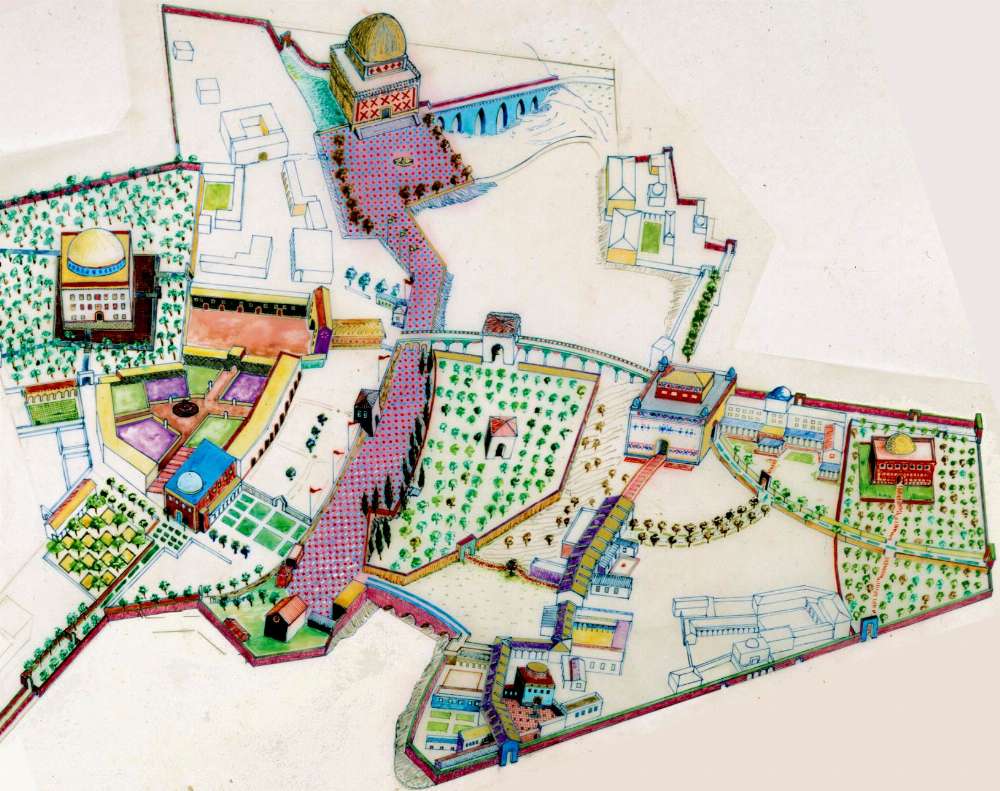
New City Center for Samarkand
1993Aga Kahn design competition for the new cultural center for the ancient city of Samarkand; the competition called for the reconstruction of a central city area about 1000 meters by 500 meters, which was to contain a great variety of activities that would form a new city core. The proposal was based on the formation of a list of entities of new public buildings, including a mosque, a hospice, a school, an observatory, an orchard, a bridge, a theater, a craft-school, a bazaar, small hotels, a music school.
Contents
-
New City Center for Samarkand: Photographs of drawings
01/04/1993
Two colored axonometric drawings for a new city center for central Samarkand, on unbuilt land. The drawings show the essential spatial envelope of the central section of Samarkand. It concentrates only on the key spaces, their shapes, building volumes, paths ...
-
New City Center for Samarkand: Photographs of project model
01/04/1993
Photograph of the rough study model, focusing on just a section of it.
References
-
The Process of Urban Design and the Formation of Larger Urban Wholes
Theoretical basis and key assumptions for the process of urban growth, tested initially in the San Francisco Waterfront experimental project in 1979, in which the formation of larger urban wholes was highlighted as an overriding rule. This process was further ...
-
The Unfolding of Public Space and Gardens as Positive Space
Outdoor space is positive when it is shaped just as a room is shaped. It has a contained character, it is bounded by walls, fences, natural vegetation, enclosure of some kind. It looks into other positive spaces, some larger, some ...
-
Designing with Patterns and Generic Rules for Making Centers
Pattern languages consist of a multitude of patterns which reflect and define a way of life, people's inner feelings and aspirations, they relate to culture, to climate and to the actual place, and they are rooted in observation. During the pattern ...
SEE ALL Scientific Research
-
A Pattern Language
1977
“A Pattern Language” is the second volume of “The Center for Environmental Structure Series” on architecture published by Oxford University Press. You can use this book to design a house for yourself with your family; you can use it to ...
-
The Nature of Order - An Essay on the Art of Building and the Nature of the Universe.
Book Two - The Process of Creating Life
2002
“The Process of Creating Life”, the second volume of “The Nature of Order” series presents a dynamic theory of living structure. It begins with an analysis of transformations, which occur in nature, and the distinction between structure-preserving transformations, responsible for ...
-
The Nature of Order - An Essay on the Art of Building and the Nature of the Universe.
Book Three - A Vision of a Living World
2005
“A Vision of a Living World”, the third volume of “The Nature of Order” series, presents, for the first time, a full spectrum of Alexander’s and CES built and unbuilt works. The book describes hundreds of buildings, plans, neighborhoods, drawings, ...
-
Chapter 13. Patterns: Generic Rules for Making Centers, 11 / The System of Patterns Emanates as a Whole
-
Chapter 3. The Hulls of Public Space, 8 / A New Approach to Urban Design: First Forming a Three Dimensional Plan of Hulls
-
Chapter 3. The Hulls of Public Space, 9 / The Hulls of Public Space: Implementation




 Go Back
Go Back